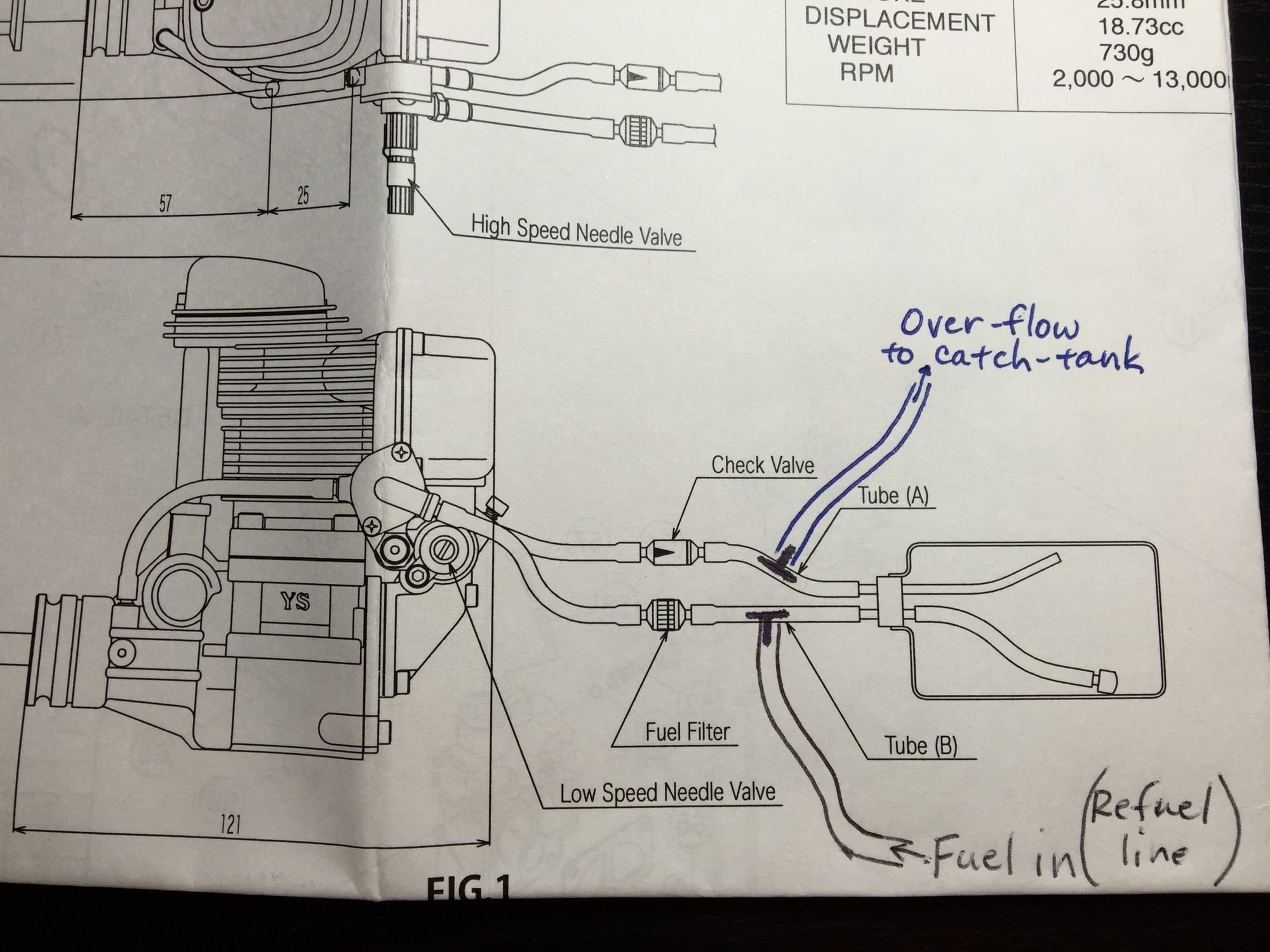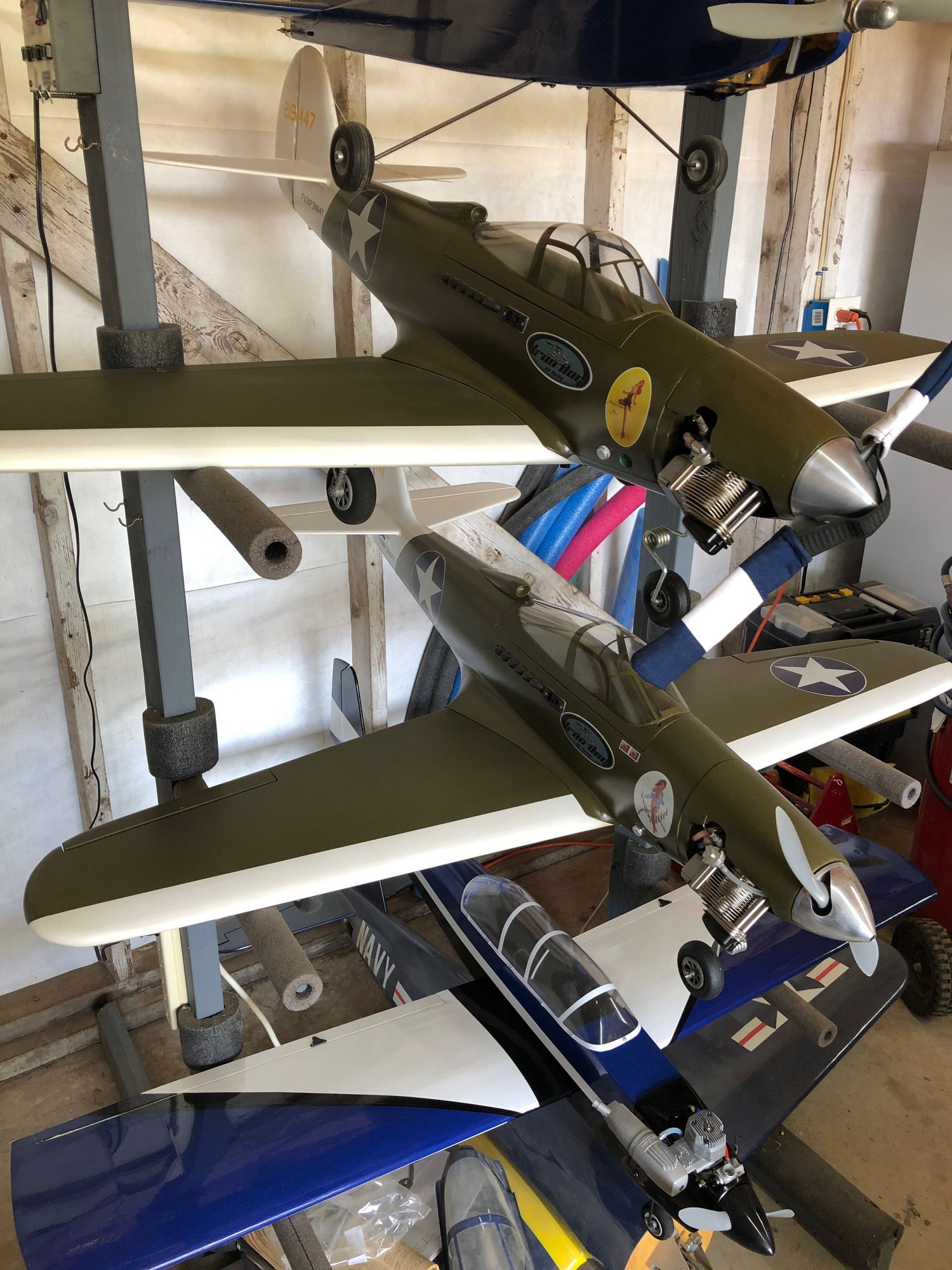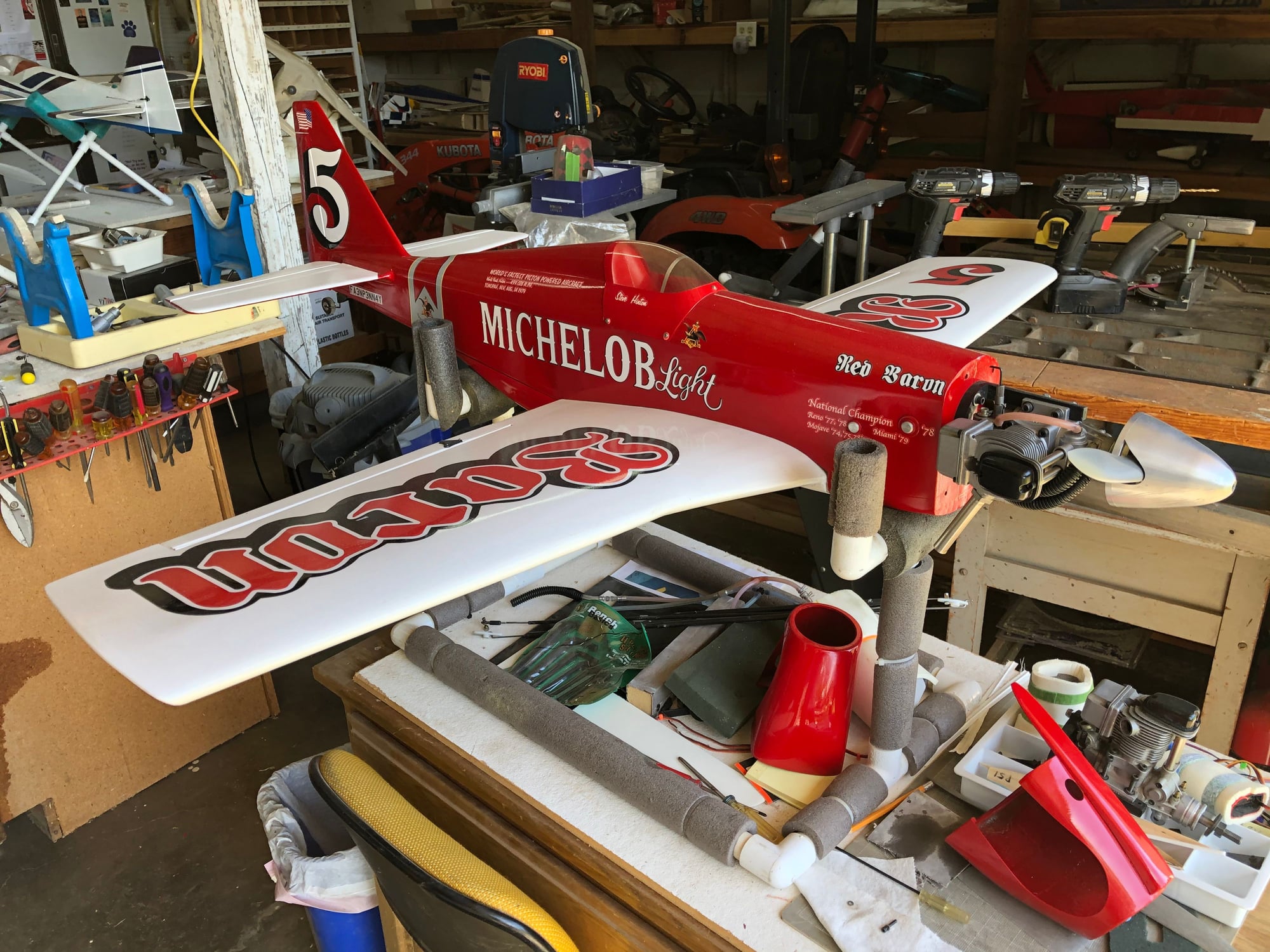Erv,
I was not at that race, so unable to know
exactly what you saw; but I have been racing warbirds since 2004, believe I understand what you are referring to. I have used a few different brands -- most with success. Reliability is key to success in this sport, so hopefully you avoid some of my initial issues in this area.
I started with Tees and fuel dots from Fourmost Products. These were plastic, and I once had a fuel T split on me during a race. I believe I caused the issue, because my fuel lines were too short, and when I pulled the fuel line far enough out of the fuselage to connect it to my fuel pump, I stressed/cracked the plastic. Using a pressurized YS engine meant fuel went everywhere inside the front portion of the fuselage. I never trusted the durability of Fourmost Tees since, so do not feel comfortable recommending them for your racer.
I decided that aluminum Tees and fueler mounts/dots were worth the extra price. I had some fellow racing friends that machined them, and they worked great; but, they have since stopped making them.
Next, I went to PSP manufacturing. These were generally good, too. But, twice, I found the retaining nut on the fueler mount to be machined incorrectly, making it extremely difficult to securely install the fueler mounts. I tried going to their web address to get a direct link to the parts for you, but I do not believe they are in business anymore. Their web page does not come up, and my local hobby shop has not had their products for a couple years now.
What I have been purchasing lately, are the Tees and fueler mounts from MPI (Maxx Products Int'l.). It is very late in the evening, so their web page is currently under "maintenance downtime"; so again, I am unable to provide a direct link for you to follow to order them from the manufacturer. What I can tell you, is that their web address is "maxxprod.com" and they sell the Tees in pairs, the fueler mounts in pairs, or one mount and one T packaged together. I most regularly purchase 2 packages of the latter, "Stock No. ACC229", pictured below. The last time I purchased these from my local hobby shop, they were $3.99 per package. I like that these Tees are double-barbed to hold the fuel line securely.
 Contents of MPI #ACC229, clockwise from bottom-left: fuel T, fueler mount and retaining nut, fuel dot (line plug), nylon washers/spacers.
Contents of MPI #ACC229, clockwise from bottom-left: fuel T, fueler mount and retaining nut, fuel dot (line plug), nylon washers/spacers.
I drew a quick sketch of where I install the Tees in my racers, to help you visualize the critical element of this set-up.
(Please see, below.)
One T is placed in-between the fuel tank and the one-way check valve (on what the YS diagram labels as "Tube A"). Another piece of tubing (usually several inches long) is connected to the T, which runs through one of the fueler mounts and is plugged by the fuel dot. This line is the pressurized vent line, which will also be connected to a catch-tank during refueling. I am assuming you will be using a YS engine; so after you run your engine, the fuel tank will be pressurized. The fuel dot on the pressurized vent line
must be disconnected
first, to relieve this pressure in the tank, and avoid the fuel in the tank being very forcefully sprayed out of the fuel line, when its dot is removed.

The other T is placed in the fuel line, between the fuel filter and the tank (on what the YS diagram labels as "Tube B"). Another piece of tubing (usually several inches long) is connected to this T, which runs through the second fueler mount and is plugged by another fuel dot. This dot is removed only
after the vent line's dot is unplugged, and the tank has been de-pressurized.
The fueler mounts are installed in the side of the fuselage, somewhere in-between the firewall and the fuel tank; or, into the cowl -- depending on model design and modeler/pilot preference.
 You can see the installation of the fueler mounts/dots in my P-39s, above. They are located just below the nose-art graphics on both airplanes. The vent line is MPI's silver AC229, and the fuel line is the green anodized version from PSP.
You can see the installation of the fueler mounts/dots in my P-39s, above. They are located just below the nose-art graphics on both airplanes. The vent line is MPI's silver AC229, and the fuel line is the green anodized version from PSP.
 On my Red Baron above, I used silver fittings for both, because that is all I had on-hand, at the time. They are visible behind the engine. I installed the fueler mounts before painting, so only the fuel dot is silver. I should have painted one of the dots, while I was at it, so one would be more readily distinguishable from the other. But I staggered the height on these to more easily differentiate. The top is the vent line, and the lower is the fuel line -- same configuration as the lines as they come out of the Hayes tank.
On my Red Baron above, I used silver fittings for both, because that is all I had on-hand, at the time. They are visible behind the engine. I installed the fueler mounts before painting, so only the fuel dot is silver. I should have painted one of the dots, while I was at it, so one would be more readily distinguishable from the other. But I staggered the height on these to more easily differentiate. The top is the vent line, and the lower is the fuel line -- same configuration as the lines as they come out of the Hayes tank.
A few recommendations:
1. Use 2 different colors of fuel tubing; and, it helps to be consistent with these colors with all your racers. I
always use the standard blue tubing for the pieces that make up my vent line. I use either the Brodak amber-colored tubing, or Sullivan clear tubing, for my fuel line components.
2. Only use a quality fuel tank with a YS engine. Many brands do not handle the pressure without eventually bursting; or may expand dramatically, and in a tight fit can crack your fuselage or bind/damage other components. Most of my colleagues and I look for rigid, seamless tanks, only using Hayes or Tettra tanks.
3. The MPI fueler mounts, Tees, and dots only come in "silver." I use older color-anodized PSP mounts/dots for my fuel line, and plain silver (effectively
no color) for my vent line. My reasoning is that fuel has color, and air does not. This helps me know at a glance, which line is which; without having to first pull the lines out to identify which is the vent line, and which is the fuel line. If you only have access to the MPI fueler mounts/dots, you might consider marking or coloring the dot in some fashion.
4. I recommend using Loctite (or similar thread-lock) on the threads of the fueler mount and retaining nut. I have had the retaining nut loosen and fall out, over time, due to vibration, when I failed to do this. (Not fun to have to disconnect and pull everything out, then re-install, just to be able to access and tighten a nut!)
5. The MPI dots are threaded, and screw into the mounts. To avoid excessive twisting (& possible kinking) of any lines, I rotate the dot (& line) counterclockwise to counter much of the clockwise twisting of the lines when I screw them in, after fueling is complete.
6. When unplugging the dot from the fuel and vent lines, pinch the tubing just in front of the dots with your fingers, first. Unplug the dot and point the opening of the line away from you, other pilots, your transmitter, and any other equipment -- before you release the pressure. Even the vent line will expel a slight amount of fuel during this process. The fuel line will expel even more, so I often choose to connect it to my fueling probe to avoid wasting the fuel and making a mess during de-pressurization.